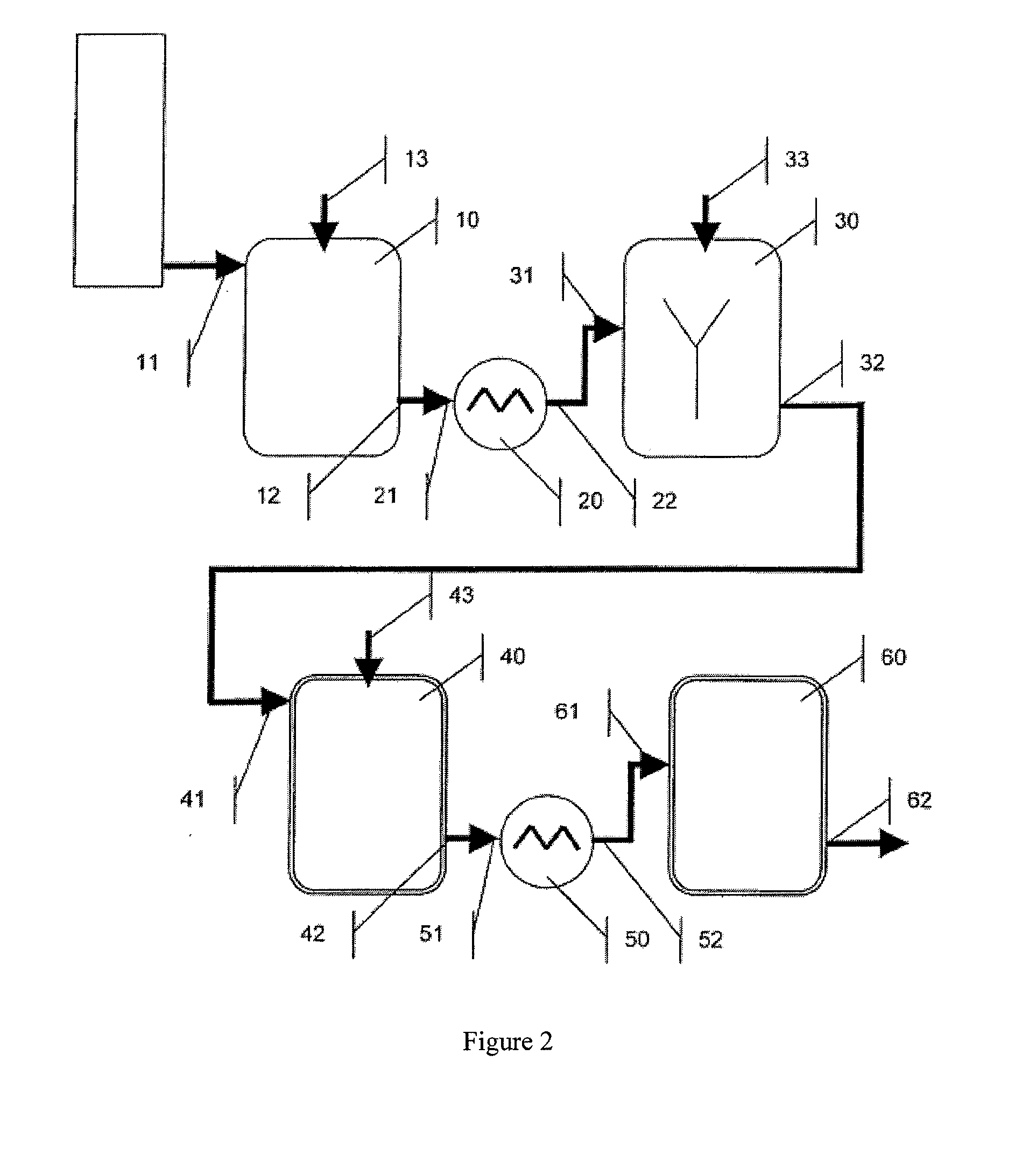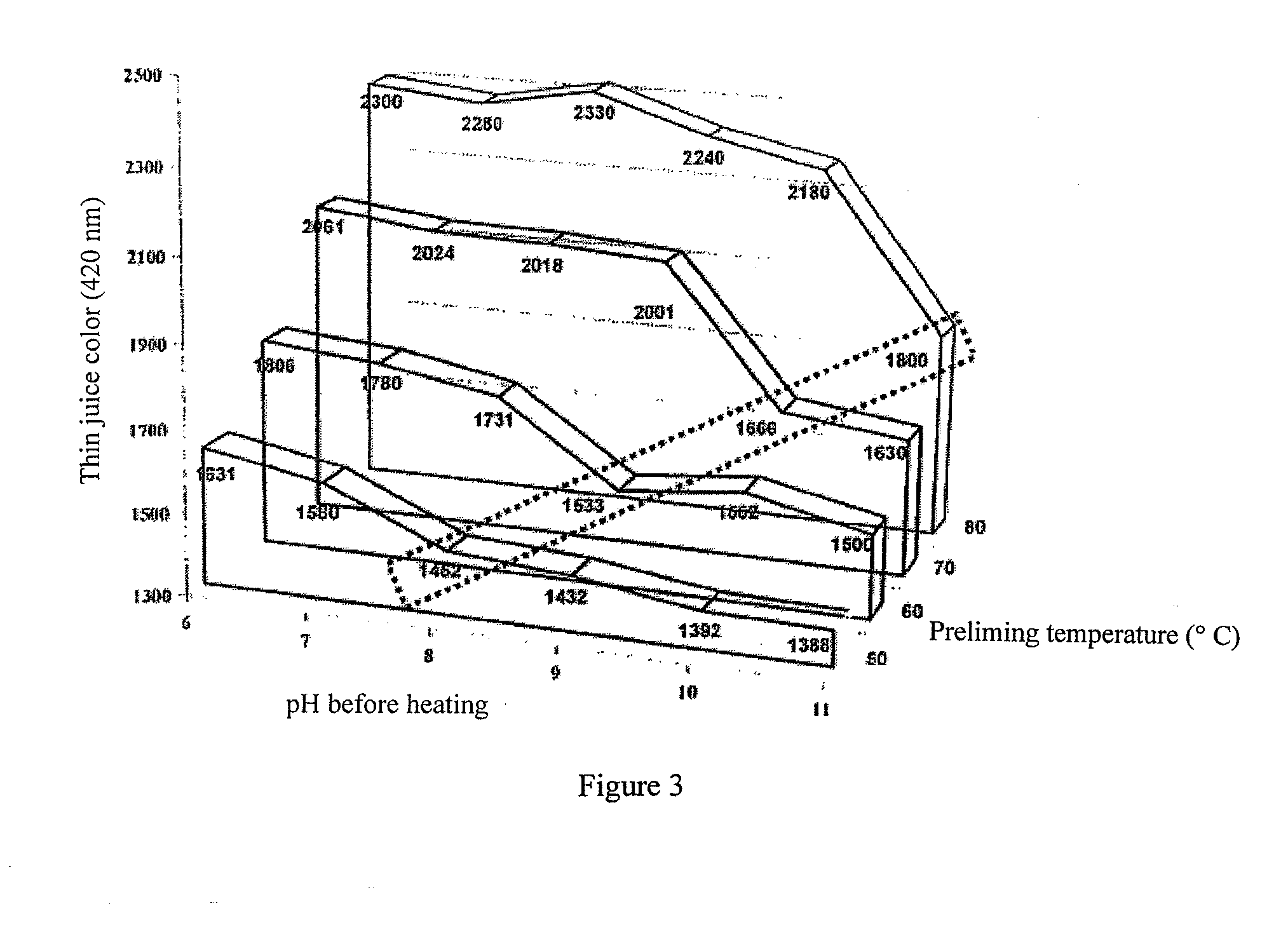Raw juice alkalinization
a technology of raw juice and alkalinization, applied in the field of raw juice alkalinization, can solve the problems of affecting the filtration efficiency of raw juice, the development of color of thin juice, and the inability to completely remove compounds from raw juice, so as to improve the filtration efficiency and reduce the filtration coefficien
- Summary
- Abstract
- Description
- Claims
- Application Information
AI Technical Summary
Benefits of technology
Problems solved by technology
Method used
Image
Examples
example
Raw Juice Purification with Early First Raw Juice Alkalinization
[0056]1. Extraction of Sugar Beet
[0057]Sugar beets, which were freshly harvested or stored for some time are washed and then chopped in a cutting machine with a cutting tool. The chopped beet cossettes are sent via a mash vessel to a counterflow extraction unit and extracted in it. The temperature in the extraction is about 75° C. A tower extractor is used as an extractor, in which the cossettes are extracted in counterflow with heated fresh water. The so-called beet raw juice is obtained as extract.
[0058]2. Purification of the Beet Raw Juice
[0059]2.1 Raw Juice Alkalinization
[0060]The technical grade raw juice is alkalinized in a first step in a separate alkalinization vessel by adding milk of lime to a pH of 6.0 to 11.0, the so-called “raw juice prealkalinization.” The alkalinization vessel is a heated vessel with agitator, CO2 inlet pipe, and pH electrode. In the raw juice prealkalinization, the raw juice is heated to...
PUM
| Property | Measurement | Unit |
|---|---|---|
| Temperature | aaaaa | aaaaa |
| Temperature | aaaaa | aaaaa |
| Mass | aaaaa | aaaaa |
Abstract
Description
Claims
Application Information
 Login to View More
Login to View More - R&D
- Intellectual Property
- Life Sciences
- Materials
- Tech Scout
- Unparalleled Data Quality
- Higher Quality Content
- 60% Fewer Hallucinations
Browse by: Latest US Patents, China's latest patents, Technical Efficacy Thesaurus, Application Domain, Technology Topic, Popular Technical Reports.
© 2025 PatSnap. All rights reserved.Legal|Privacy policy|Modern Slavery Act Transparency Statement|Sitemap|About US| Contact US: help@patsnap.com



